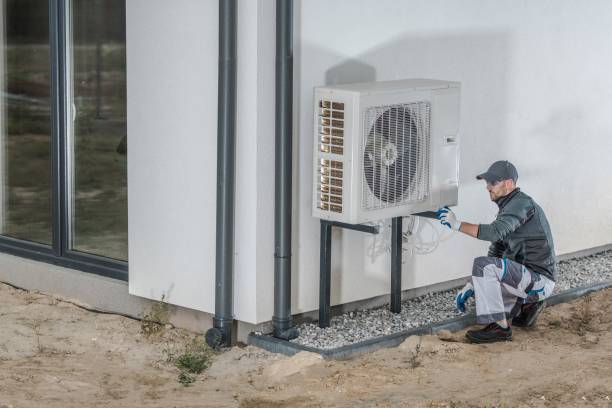Indoor air quality is a crucial factor for creating a healthy and comfortable living or working environment. Poor air quality can cause a range of health issues, such as respiratory problems, allergies, headaches, and fatigue. It can also affect productivity and concentration levels, leading to reduced performance at work or school.
That's where Reliance Ventilation Systems comes in. As experts in the field of ventilation, they offer a range of solutions to improve indoor air quality, including heat recovery ventilation, positive pressure ventilation, and extract ventilation.
Heat Recovery Ventilation
Heat recovery ventilation (HRV) is a system that provides fresh air while minimizing energy loss. It works by extracting stale air from inside the building and using it to preheat the incoming fresh air. The system uses a heat exchanger to transfer heat from the outgoing air to the incoming air, ensuring that the fresh air is at a comfortable temperature without the need for additional heating.
Positive Pressure Ventilation
Positive pressure ventilation (PPV) is a system that introduces fresh air into the building through a duct system, creating positive pressure. This pressure pushes stale air out of the building through natural leakage points, such as windows, doors, and vents. The system helps to improve indoor air quality by providing a constant supply of fresh air and reducing the risk of condensation and dampness.
Extract Ventilation
Extract ventilation is a system that removes stale air from the building through a duct system, creating negative pressure. Fresh air is then drawn into the building through natural leakage points, such as windows, doors, and vents. The system helps to remove pollutants and moisture from the indoor environment, creating a healthier and more comfortable living or working space.
Reliance Ventilation Systems provides a range of ventilation solutions tailored to your specific needs. Their team of experts can assess your building and recommend the best ventilation systems for your requirements. With their help, you can enjoy a healthier and more comfortable indoor environment.
If you're interested in improving your indoor air quality, contact Reliance Ventilation Systems today for a consultation.
The Role of Ventilation Systems:
1. Air Exchange:
Ventilation systems facilitate the exchange of indoor and outdoor air. This process is vital for removing stale air, odors, and pollutants while bringing in fresh, oxygen-rich air. Proper air exchange is especially crucial in enclosed spaces where natural ventilation may be limited.
2. Moisture Control:
Effective ventilation helps control humidity levels. Excess moisture can lead to mold growth and other issues that not only affect indoor air quality but also the structural integrity of buildings. Ventilation systems play a key role in preventing these problems.
3. Temperature Regulation:
While ventilation primarily focuses on air quality, it also plays a role in temperature regulation. In warmer climates, ventilation helps expel heat, while in colder climates, it assists in maintaining a comfortable temperature indoors.
Types of Ventilation Systems:
1. Natural Ventilation:
Natural ventilation relies on the use of windows, doors, and vents to allow the free flow of air. This method is energy-efficient but may be limited by external factors like weather conditions.
2. Mechanical Ventilation:
Mechanical ventilation involves the use of fans and duct systems to circulate air. This type of ventilation can be controlled more precisely, making it suitable for various environments.
a. Exhaust Ventilation:
This system expels indoor air to the outside, creating a negative pressure that draws in fresh air. Common in kitchens and bathrooms, exhaust ventilation is effective at removing pollutants at the source.
b. Supply Ventilation:
In contrast to exhaust ventilation, supply ventilation introduces fresh air into a space. This method is often used in residential settings, ensuring a continuous supply of clean air.
c. Balanced Ventilation:
Combining elements of both exhaust and supply ventilation, balanced ventilation systems aim to maintain an equilibrium between indoor and outdoor air. This provides precise control over air quality and temperature.
Benefits of Ventilation Systems:
1. Improved Health:
Adequate ventilation reduces the concentration of indoor pollutants, promoting better respiratory health. It helps mitigate the risks associated with mold, dust mites, and volatile organic compounds (VOCs).
2. Energy Efficiency:
Modern ventilation systems are designed with energy efficiency in mind. By strategically controlling the flow of air, these systems contribute to lower energy consumption and reduced utility costs.
3. Comfort Enhancement:
A well-ventilated space is more comfortable for occupants. Proper ventilation helps regulate temperature and humidity, creating a pleasant environment for living, working, or recreational activities.
4. Preservation of Building Integrity:
Ventilation systems play a crucial role in preventing structural damage caused by moisture buildup. This is particularly important for buildings with materials susceptible to decay or rot.
Also check: Should I Upgrade to Central Air in My Old House?







